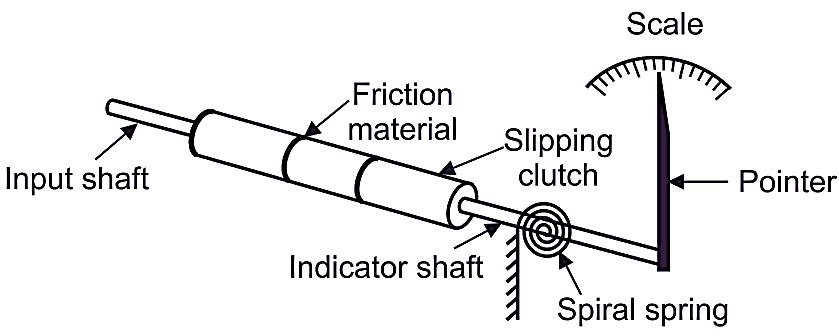Slipping clutch tachometer consists of a driving shaft and an indicator shaft, connected by means of slipping clutch. The rotating shaft, whose speed is to be measured, drives an indicator shaft. The pointer attached to the indicator shaft moves over a calibrated scale and reading obtained is a measure of shaft speed, against the torque of spiral spring.

Fig. 1: Slipping Clutch Tachometer.
Advantages of Slipping Clutch Tachometer
- Simple to operate
- Simple in construction.
Disadvantages of Slipping Clutch Tachometer
- Limited to low speed measurement.
- More chance of error.
- It gives average speed, instead of instantaneous speed.
Applications of Slipping Clutch Tachometer
- Used to measure shaft speed.
- Preferred In applications, where average speed of shaft is to be measured.